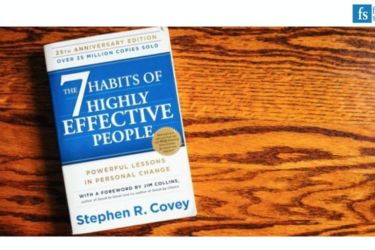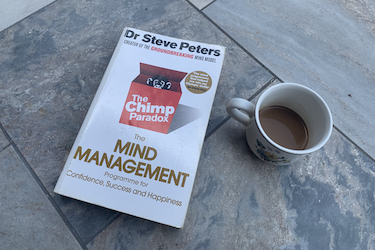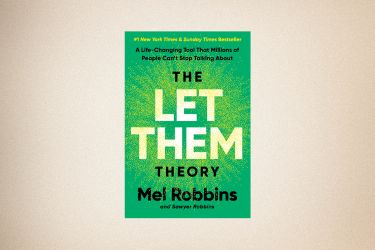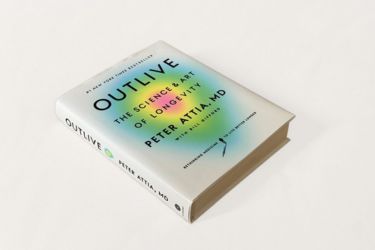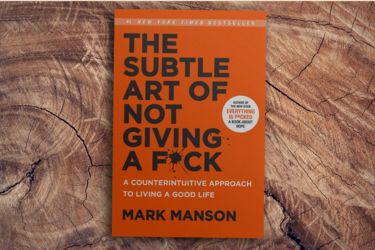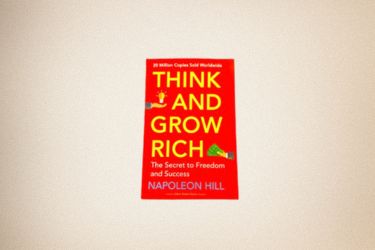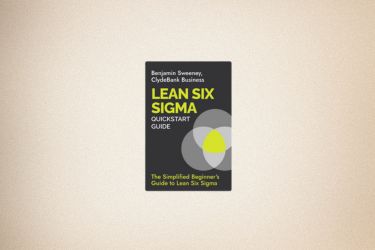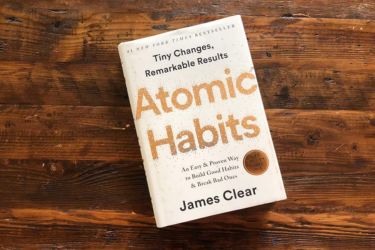Rich Dad Poor Dad by Robert Kiyosaki has become one of the most talked-about personal finance books since its publication in 1997. The book presents financial lessons through the contrasting perspectives of two father figures in Kiyosaki's life: his biological father (the "Poor Dad") and his best friend's father (the "Rich Dad"). These two men represent completely different approaches to money, work, and building wealth.

This book challenges traditional thinking about money by arguing that financial education matters more than formal education when it comes to building wealth. Kiyosaki uses simple stories and examples to explain complex financial concepts like assets versus liabilities, passive income, and investment strategies. The book encourages readers to think differently about how they earn, spend, and invest their money.
We'll examine the book's main lessons, practical advice, and real-world impact in this review. Whilst Rich Dad Poor Dad has inspired millions of readers worldwide, it has also faced criticism for some of its claims and recommendations. Understanding both the strengths and weaknesses of this influential book can help you decide whether its lessons apply to your financial situation.
Key Takeaways
- The book teaches that acquiring assets that generate passive income is more important than working for wages
- Financial education and understanding money management principles matter more than traditional academic qualifications for building wealth
- Readers should think critically about the book's advice, as some recommendations carry significant risks and may not suit everyone's situation
Overview of Rich Dad Poor Dad

Rich Dad Poor Dad was first published in 1997 by Robert T. Kiyosaki and co-author Sharon Lechter. The book uses a unique storytelling approach to compare financial advice from two contrasting father figures.
Background and Publication
Rich Dad Poor Dad emerged as one of the most influential personal finance books when it was published in 1997. Robert T. Kiyosaki wrote the book alongside Sharon Lechter.
The book challenges traditional financial wisdom. It focuses on building wealth through assets rather than working for wages.
Kiyosaki draws from his experiences with two father figures. His biological father represents the "poor dad" mindset. His best friend's father serves as the "rich dad" who taught different money lessons.
The book became a global phenomenon. It has sold millions of copies worldwide and remains popular nearly three decades later.
Key Publication Details:
- Authors: Robert T. Kiyosaki and Sharon Lechter
- First Published: 1997
- Main Focus: Financial literacy and wealth building
- Target Audience: People seeking financial independence
Structure and Writing Style
Rich Dad Poor Dad uses storytelling rather than technical financial analysis. We find anecdotes and personal experiences throughout the book instead of complex investment mathematics.
The narrative contrasts two different approaches to money. The "poor dad" represents traditional thinking about education and employment. The "rich dad" shows alternative paths to wealth.
Kiyosaki presents lessons through conversations and situations. Each chapter builds on principles like acquiring assets and understanding cash flow.
The writing style remains accessible to general readers. We see simple language that avoids financial jargon and complex concepts.
Structure Elements:
- Story-based lessons
- Contrasting viewpoints
- Practical examples
- Straightforward language
Key Themes and Lessons
Robert T. Kiyosaki builds his entire philosophy around the contrasting advice from two father figures, emphasising how proper financial education can break traditional thinking about earning and building wealth.
Contrasting Financial Philosophies
The book centres on two distinct approaches to money through Kiyosaki's "poor dad" and "rich dad" figures. Poor dad represents traditional thinking - study hard, get good grades, find a secure job, and work for others your entire life.
This father figure held a PhD but struggled financially. He believed in playing it safe and avoiding risks.
Rich dad took the opposite approach. Despite only finishing eighth grade, he became wealthy through different thinking. He focused on:
- Building assets instead of just earning wages
- Taking calculated risks rather than avoiding them
- Making money work for him instead of working for money
The poor dad saw a house as his biggest asset. The rich dad understood that a house creates expenses, not income. This fundamental difference shows how financial education shapes our understanding of wealth.
The Importance of Financial Education
Kiyosaki argues that schools teach us nothing about money management. We learn academic subjects but never discover how to build wealth or understand cash flow.
Financial education means learning the difference between assets and liabilities. Assets put money in your pocket. Liabilities take money out of your pocket.
Most people think they're buying assets when they're actually buying liabilities. A car loan or mortgage creates monthly payments. Real assets generate income without your direct involvement.
The rich dad taught practical financial skills:
- Reading financial statements
- Understanding cash flow patterns
- Recognising investment opportunities
- Building passive income streams
Without this education, we remain trapped in cycles of earning and spending. Financial literacy becomes the foundation for lasting success.
Breaking the Salary Myth
Traditional thinking says a good salary equals financial security. Kiyosaki challenges this belief by showing how high earners often struggle with money.
The salary trap keeps people working harder for more money instead of making money work for them. Higher salaries often lead to higher expenses and more debt.
Rich dad focused on building income-producing assets. These create money whether you work or not. The goal becomes financial independence, not just higher wages.
Most employees trade time for money in a limited exchange. Business owners and investors create systems that generate income continuously. This shift in thinking separates those who build wealth from those who simply earn wages.
Breaking free means developing multiple income sources beyond your job. Success comes from understanding how money flows and creating systems that capture it.
Understanding Assets and Liabilities
Kiyosaki's definition of assets and liabilities forms the foundation of his wealth-building philosophy. Assets put money into your pocket, whilst liabilities take money out of your pocket each month.
Defining Assets
According to Kiyosaki, an asset is anything that generates income for you. This differs from traditional accounting definitions that focus on ownership value.
True assets include:
- Rental properties that produce monthly income
- Dividend-paying shares
- Bonds that pay interest
- Business investments that generate profits
- Royalties from intellectual property
The key test is simple. Does it put money in your pocket each month? If yes, it's an asset.
Many people think their home is an asset. Kiyosaki argues it's actually a liability because it costs you money through mortgage payments, insurance, and maintenance.
This perspective challenges conventional thinking about wealth. We must focus on acquiring things that pay us, not things that cost us money.
Identifying Liabilities
Liabilities drain money from your pocket on a regular basis. Most people accumulate liabilities thinking they're building wealth.
Common liabilities include:
- Your primary residence (mortgage, insurance, rates)
- Car loans and lease payments
- Credit card debt
- Personal loans
- Expensive hobbies that don't generate income
The wealthy minimise liabilities. The poor and middle class accumulate them believing they represent success or investment.
Credit card debt is one of the worst liabilities. High interest rates compound against you, making wealth building nearly impossible.
We must examine our monthly expenses critically. Each payment going out represents a liability that prevents us from building true wealth.
Building Wealth through Investments
Real wealth comes from acquiring assets that generate passive income. Kiyosaki built his fortune primarily through property investments.
Effective wealth-building strategies:
- Buy rental properties in growing areas
- Invest in dividend-paying companies
- Start businesses that operate without constant supervision
- Purchase bonds or fixed-income securities
The goal is creating income streams that don't require trading time for money. This allows your investments to work whilst you sleep.
We should reinvest income from assets to buy more assets. This creates a compounding effect that accelerates wealth building over time.
Property investment receives significant attention in the book. Rental income provides monthly cash flow whilst property values potentially appreciate long-term.
Practical Advice on Financial Literacy
Kiyosaki provides concrete steps for building financial knowledge and breaking free from traditional money habits. His approach focuses on practical education, learning through experience, and specific tactics that work for everyday people.
Becoming Financially Literate
Financial literacy starts with understanding the difference between assets and liabilities. We must learn that assets put money in our pockets whilst liabilities take money out.
The book emphasises reading financial statements regularly. This means tracking our income, expenses, and cash flow each month. We should also study how money works in the real world.
Key learning areas include:
- Basic accounting principles
- Understanding tax implications
- Investment fundamentals
- Business structures
We need to read financial books, attend seminars, and learn from successful investors. The author suggests starting with small investments to gain experience. This hands-on approach builds confidence over time.
Most importantly, we must understand that traditional education doesn't teach us about money. We have to seek financial education ourselves through books, courses, and mentors.
Learning from Mistakes
Kiyosaki believes mistakes are valuable learning opportunities. We shouldn't fear making financial errors but rather learn from them quickly and move forward.
The rich dad taught him that failure is part of the learning process. Each mistake provides lessons that classroom education cannot offer. We should analyse what went wrong and adjust our approach.
Common mistakes to learn from:
- Buying liabilities thinking they're assets
- Working only for money instead of learning
- Avoiding risks completely
- Following conventional financial advice blindly
We must start investing early, even with small amounts. Making mistakes with £100 teaches us lessons that prevent losing £10,000 later. The key is learning faster than we lose money.
Taking calculated risks helps us grow our financial intelligence. We should view setbacks as education rather than failures.
Strategies for the Middle Class
The middle class often gets trapped in what Kiyosaki calls the "rat race." We work harder for money instead of making money work for us.
Breaking free requires changing our mindset about income. Instead of just earning wages, we should focus on building passive income streams. This might include rental properties, dividends, or business ownership.
Practical steps for middle-class families:
- Pay ourselves first before paying bills
- Invest in assets that generate cash flow
- Start a side business for additional income
- Reduce unnecessary expenses and debt
We should avoid lifestyle inflation when our income increases. Extra money should go towards investments rather than bigger houses or cars. The goal is accumulating assets that produce income.
Personal finance success comes from consistent small actions over time. We don't need massive amounts of money to start building wealth through proper financial literacy.
Insights Into Wealth Creation
Kiyosaki presents specific strategies for building wealth that challenge traditional financial thinking. The book emphasises three core areas: shifting from employee to investor thinking, creating income streams that work without constant effort, and breaking free from debt cycles.
Developing an Investor Mindset
The book draws a clear line between how rich and poor people think about money. Poor Dad focuses on job security and steady wages. Rich Dad teaches us to look for opportunities and think like business owners.
Key mindset shifts include:
- Viewing expenses as potential investments
- Asking "How can I afford it?" instead of saying "I can't afford it"
- Looking for assets that generate income
Kiyosaki explains that wealthy people don't work for money. Instead, they make money work for them. This means buying things that put cash in our pockets rather than take it out.
The investor mindset also involves taking calculated risks. Poor Dad sees risk as something to avoid. Rich Dad teaches that the biggest risk is playing it safe and missing opportunities.
We learn to evaluate every purchase by asking whether it will make us money or cost us money in the long run.
The Role of Passive Income
Passive income sits at the heart of Kiyosaki's wealth-building strategy. This means earning money without actively working for it every day.
Common sources of passive income include:
- Rental properties
- Dividend-paying shares
- Business ownership
- Royalties from intellectual property
The book shows us why passive income matters more than high wages. Someone earning £50,000 per year in passive income has more financial freedom than someone earning £100,000 from a job.
Kiyosaki explains that wealthy people focus on building multiple income streams. They don't rely on just one source of money. This approach provides security and growth potential.
The goal is reaching a point where passive income covers all living expenses. Once we achieve this, work becomes optional rather than necessary for survival.
Overcoming Debt
Kiyosaki makes a crucial distinction between good debt and bad debt. Bad debt takes money out of our pockets each month. Good debt helps us acquire assets that generate income.
Examples of debt types:
| Good Debt | Bad Debt |
|---|---|
| Mortgages on rental properties | Credit card debt |
| Business loans | Car loans |
| Investment property loans | Personal loans |
The book teaches us to avoid consumer debt that doesn't generate income. Credit cards and car loans drain our wealth-building potential.
Instead, we should use debt strategically to acquire income-producing assets. A mortgage on a rental property can be good debt if the rent covers the payments and generates profit.
Kiyosaki emphasises paying off bad debt quickly whilst using good debt to grow our asset base. This approach accelerates wealth creation rather than hindering it.
The key is understanding that debt itself isn't the enemy. How we use debt determines whether it helps or hurts our financial success.
Character Analysis: The Two Fathers
Robert Kiyosaki's story centres on two father figures who represent completely different approaches to money and success. His poor dad followed traditional education and employment whilst his rich dad built wealth through business ownership and investments.
Poor Dad: The Traditional Path
Kiyosaki's biological father, the poor dad, was highly educated with a PhD. He believed in the conventional route to financial security.
Core Beliefs:
- Study hard and get good grades
- Find a secure job with benefits
- Work your way up the corporate ladder
- Your house is your biggest asset
The poor dad valued education but lacked financial literacy. He worked hard his entire life yet struggled with money.
He believed in job security over financial independence. This mindset kept him trapped in the "rat race" of working for others.
Despite earning a good salary as a government employee, he died in debt. His approach focused on earning money rather than making money work for him.
The poor dad avoided financial risks. He saw investing as gambling and preferred the safety of a steady paycheque.
Rich Dad: The Entrepreneurial Approach
Rich dad was Kiyosaki's best friend's father and a successful businessman. He dropped out after eighth grade but built significant wealth.
Key Philosophy:
- Assets put money in your pocket
- Liabilities take money out
- Build businesses and buy investments
- Make money work for you
This businessman understood how money worked. He focused on acquiring income-producing assets like rental properties and businesses.
Rich dad took calculated risks and embraced financial education. He taught practical money skills that schools don't cover.
He believed in creating multiple income streams. Rather than relying on one job, he built various businesses and investments.
The rich dad encouraged learning through experience. He believed real financial education came from doing, not just studying theory.
Impact and Criticisms
Rich Dad Poor Dad has sparked significant debate since its 1997 release, generating both passionate supporters and vocal critics. The book's influence on financial education remains undeniable, whilst controversies about its methods and claims continue to surface.
Reception and Influence
Robert T. Kiyosaki's Rich Dad Poor Dad became a bestselling personal finance book that fundamentally changed how millions approach money. The book challenged conventional financial wisdom by promoting asset building over traditional employment.
Key Areas of Influence:
- Financial Education: Introduced basic concepts of assets versus liabilities to mainstream audiences
- Mindset Shifts: Encouraged readers to think like investors rather than employees
- Entrepreneurship: Inspired countless people to start businesses and pursue passive income
The book's narrative style made complex financial concepts accessible to ordinary readers. Many credit it with starting their journey towards financial literacy and independence.
Rich Dad Poor Dad sparked a movement that questioned traditional advice about getting good grades, finding secure jobs, and saving money. Instead, it promoted real estate investing, business ownership, and financial education as paths to wealth.
Controversies and Criticisms
Critics have raised serious questions about the book's accuracy and practical advice. Financial experts often point out that Kiyosaki's strategies carry significant risks that aren't adequately explained.
Main Criticisms Include:
- Lack of Specifics: The book offers motivational concepts but limited actionable advice
- Risky Strategies: Promotes debt-financed real estate without discussing potential downsides
- Questionable Claims: Some financial professionals dispute the book's core assumptions about money and investing
The book's emphasis on avoiding traditional employment has drawn criticism for being unrealistic. Many argue that steady jobs provide essential security and benefits that entrepreneurship cannot guarantee.
Some financial advisors worry that readers might make poor investment decisions based on the book's simplified explanations. The complex nature of real estate and business investing requires more detailed knowledge than the book provides.
Conclusion and Personal Reflection
Rich Dad Poor Dad changed how we think about money and work. The book made us question why people stay trapped in jobs they don't like.
Key takeaways that stuck with us:
- Assets put money in your pocket
- Liabilities take money out
- Financial education matters more than good grades
- The rich don't work for money
We appreciate Kiyosaki's simple writing style. He explains complex ideas without fancy words or confusing terms.
The two-father comparison works brilliantly. It shows different mindsets about money in an easy way to understand.
Some advice feels outdated now. Property investing isn't as simple as it was in 1997. Market conditions have changed a lot since then.
We found ourselves thinking differently about our own spending habits. Before reading this book, we focused mainly on earning more money rather than managing what we had.
The emphasis on starting businesses resonates with us. However, we wish Kiyosaki provided more practical steps for beginners.
This book works best as a mindset changer. Don't expect detailed investment advice or step-by-step guides.
Our rating: 4/5 stars
The financial lessons remain relevant today. We'd recommend it to anyone starting their financial education journey, especially young adults who haven't formed fixed money beliefs yet.
Most importantly, this book taught us that financial freedom comes from what you know, not just how much you earn.
Frequently Asked Questions
Readers often have specific questions about Kiyosaki's methods, the book's impact on financial literacy, and how it compares to other money management guides. These common inquiries address the book's practical value and ongoing relevance.
What are the key takeaways from 'Rich Dad Poor Dad'?
The book teaches that financial education matters more than high income. Many people earn good money but still struggle financially because they lack money management skills.
Kiyosaki emphasises the difference between assets and liabilities. Assets put money in your pocket, whilst liabilities take money out. This simple concept forms the foundation of wealth building.
The author advocates for creating passive income streams. Instead of working for money, wealthy people make money work for them through investments and business ownership.
How does 'Rich Dad Poor Dad' compare to other personal finance books?
Unlike technical finance guides, this book uses storytelling to teach concepts. The rich dad versus poor dad narrative makes complex ideas easier to understand for beginners.
Most personal finance books focus on budgeting and saving. Kiyosaki takes a different approach by emphasising income generation and investment thinking.
The book offers more mindset coaching than practical step-by-step instructions. Other books provide detailed budgeting templates and investment formulas.
Can 'Rich Dad Poor Dad' truly help with improving financial literacy?
The book introduces basic financial concepts in simple language. Readers learn to think differently about money, debt, and investment opportunities.
However, the book lacks specific investment advice or detailed strategies. It serves as a starting point rather than a complete financial education.
Many readers report changing their spending habits after reading the book. The mindset shift often leads people to seek additional financial education and investment knowledge.
What are some criticisms associated with 'Rich Dad Poor Dad'?
Critics argue that Kiyosaki oversimplifies complex financial concepts. Real estate and business investment carry risks that the book doesn't fully address.
Some financial experts question whether the "rich dad" character actually existed. The lack of specific details about this mentor raises authenticity concerns.
The book promotes debt as a wealth-building tool, which can be dangerous advice. Many readers lack the financial knowledge to use leverage safely.
Are there any significant differences between the original version of 'Rich Dad Poor Dad' and later editions?
The core content and main lessons remain the same across all editions. Updated versions include new forewords and additional commentary from Kiyosaki.
Later editions contain responses to criticisms and clarifications of controversial points. The author addresses questions that arose after the book's initial success.
Some newer versions include study guides and discussion questions. These additions aim to help readers better understand and apply the concepts.
What subsequent books has the author published after 'Rich Dad Poor Dad', and do they build on the same concepts?
Kiyosaki has written over 25 books expanding on his original ideas. "Cashflow Quadrant" explores different ways people earn money, from employees to business owners.
"Rich Dad's Guide to Investing" provides more detailed investment strategies. This book builds on the asset-building concepts introduced in the original.
His later works cover specific topics like real estate, sales, and financial planning. Each book maintains the rich dad philosophy whilst diving deeper into particular wealth-building methods.


